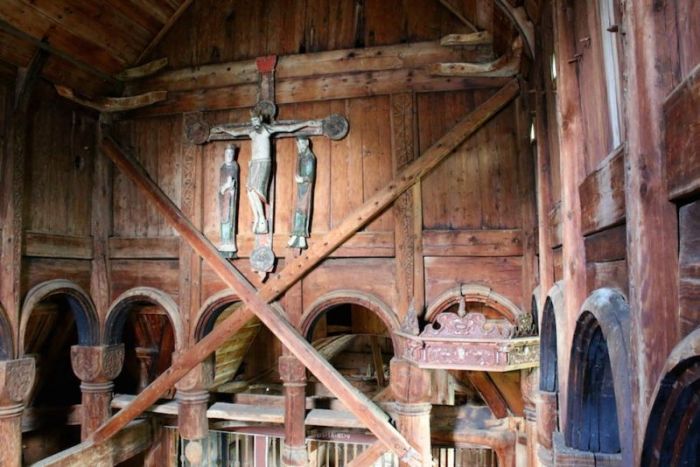Spires and Crosses: Fjords and Incredible Medieval Churches in Norway
If you're like me then stunning fjords and picturesque landscapes are the first things that come to mind when thinking about Norway.
Yet in the midst of all that natural beauty are well-preserved medieval churches.
Just look at the picture below.

That could be you standing in front of Trondheim's Nidaros Cathedral, the historic venue for Norway's royal coronations.
While Trondheim's cathedral is magnificent — arguably northern Europe's most impressive west front outside of Lincoln and Peterborough cathedrals in England—it actually isn't Norway's best medieval church.
That title is shared by the 28 wooden stave churches.
Named after the construction method of erecting load-bearing posts (called staves in Norwegian) upon rocks or sill frames, the churches have remained more or less intact for the last 800 or so years. Some were restored in the late 19th century, when a movement formed to preserve Norway's cultural heritage. Even with restorations, almost all of the churches still contain the original wooden stave construction.
A good example is the stave church located along the northern shore of Sogne Fjord in Kaupanger.
Restored around 1862 and again in the 1960s, Kaupanger's stave church, which still hosts a Church of Norway (Lutheran) congregation, features a 16th century baroque interior that nicely compliments the original 12th century construction.
The two must-visit stave churches are in Urnes and Borgund.
Getting to Urnes is well worth the ferry ride from Solvorn, where you will want to stay at the Walaker Hotel.
Built in approximately 1130 to replace two earlier wooden churches, the Urnes stave church is such a fine example of medieval church architecture that it has been listed by UNSECO World Heritage. Do look for the ornate carvings on the north door, which are believed to date to one of the earlier churches, and the original 12th century crucifix.

By contrast, Borgund's stave church felt more like a museum than a church, as the ecclesiastical furnishings added in the centuries after construction in the late 12th century or early 13th century have been removed.
You'll also note the tiered roof with its gables and carved dragons. These architectural details, typical of the stave churches once found across Norway, would later inspire the so-called dragon style architecture of cottages and hotels erected in the late 19th century.
Where to stay and eat
The Scandic Bakklandet Hotel is centrally located in Trondheim with excellent views of the Nidelven River. Rooms from about $109 per night.
The Walaker Hotel is highly recommended. Not only is it Norway's oldest hotel — it dates to the 17th century — but it's located only yards from the ferry to the 12th century Urnes stave church. Not to be missed is coffee in the study or an evening stroll through the garden, which is particularly glorious in June when the plentiful sunlight means it never really get dark — at least pitch-black. Rooms from about $286 per night.
Small cafés are located across from the stave churches in Urnes, Borgund and Kaupanger. My favorite was in Kaupanger, which had good lattes.
How to get there
Most of the stave churches are located in the Fjord region, which means you'll want to fly into either Bergen or Trondheim.
A rental car, equipped with a GPS navigation device, is a must. Be prepared to also take a few car ferries, which are quick and reasonably priced.
Spires and Crosses is published every Sunday.





























